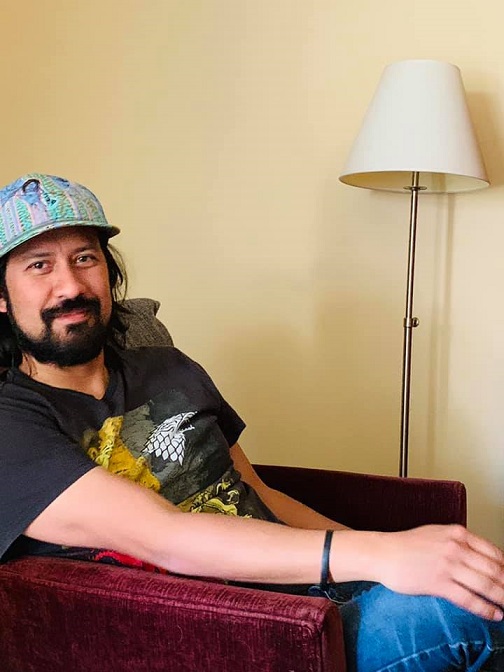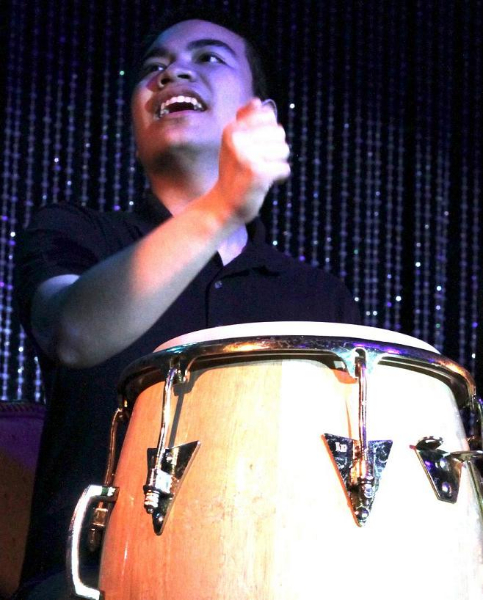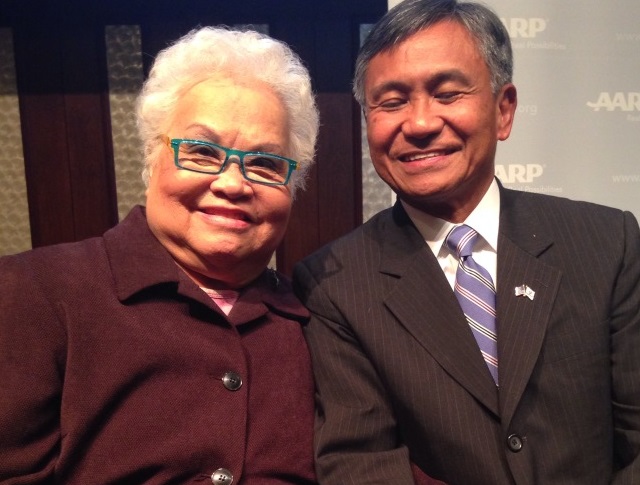Watsonville riots film provokes difficult questions about race then and today: director

By Cristina DC Pastor
Somewhere in California in the 1930s, they had the Watsonville riots. Framed within the current wave of anti-Asian violence, this aggression against Filipino farm workers has been a long-forgotten episode of our painful past in this country.
Filmmaker Randal Kamradt, a Filipino American who teaches video production in Fillmore High School in California, wants us to not forget. He made the short film to commemorate Filipino American History Month in October and also to “bring more of my culture’s voice into cinema.”
“No Dogs” stars Georgina Tolentino and Ian Coleman as two strangers who find themselves in a tense interaction inside a diner during that era. Marisol seeks safety in Carl’s diner while riots are raging. Just the two of them inside the restaurant, they go through a range of emotions — from distrustful to hostile to easy-going to angry to suspicious to silent – until the 15-minute film reaches its powerful ending.
Randal was born in San Diego and raised almost entirely in California. His mother is Filipino from Biliran province located between Leyte and Samar in the Visayas. His father is Caucasian with German roots. It took him a while to develop a consciousness about being Filipino American, he said, because there was no FilAm in Fillmore where he spent his boyhood. He returned to Leyte in 2012 to make a film about his mother’s hometown in Almeria in Biliran. While living in Philippines at the height of typhoon Yolanda in 2013, he met his Filipino wife and from there grew to have a “deeper connection to my heritage.” He has directed, produced, or written about 10 features and short films.

His most recent, “No Dogs” won two awards from the Chelsea Film Festival in New York on October 17th — the Petite Prix Award for Best Short Film and the Short Film Audience Award.’ Actor Ian Coleman also won the Best Supporting Actor award.
The FilAm: Is the title in reference to the door signs ‘No dogs, no Filipinos allowed’ which were posted in public places in California in the 1930s?
Randal Kamradt: It is at first a totally enigmatic title when you don’t know anything about the film. We glimpse the sign but not the full thing near the start of the story. At the very end we see the full sign and it underscores the racism so commonplace and unremarkable at the time.
TF: Why did you make this film?
RK: Really it is as simple as being Filipino American and having an interest in portraying our stories and history in film. I’d never heard about this history, and the story was brought to me by our producer, star, and writer Georgina Tolentino. Once I read it, I realized very quickly that this was an incredible opportunity and would make for a very meaningful story.
TF: What were you trying to say?
RK: We wanted to explore some unseen history and ask difficult questions about race relations both then and today.
TF: How did you become a filmmaker? What types of films do you like to make?
RK: I can barely remember ever wanting anything other than to be a filmmaker. It’s basically a childhood dream. My story that I tell is that I loved old Godzilla movies as a kid, and one day I asked my father how they got made and who it was that made such wondrous things. He said the director makes the film, and I latched onto that.


There’s nothing more appealing to make than adventure films. They are so perfectly suited to cinema, to the ability to depict action dynamically and to capture unique locations. So, I love making adventure films. But I really feel that I’m quite able to make films of nearly any genre. They are all the same in the end: how do you get an audience to feel something? You have a lot of tools at your disposal as a filmmaker, and all of them need to be aimed at generating emotion. “No Dogs” is a period drama and partially a thriller, and it was terrific fun to make. I hope to make more like it.
TF: You’re a writer, director, special effects, etc. Did you go to film school?
RK: I did not go to film school. I felt that film school would train me to make films of a certain minimum scale, a scale that Hollywood calls “low budget” but is still usually more than the cost of a house. That would mean I would be reliant on investors.
Not to put too fine a point on it, but being an artist of color in addition to having no Hollywood family connections, I felt this was a dubious method of making films. So instead, I chose to focus on getting involved in no-budget genre filmmaking. I worked on a film called “Zombie Ed” along with countless others and eventually learned quite a few tricks on how to get things made for next to nothing. That method culminated when I myself wrote and directed “Faraway” in 2013.
TF: That was some suspenseful, powerful ending.
RK: Georgina actually had many different versions of the ending. She ran these all by me in our conversations but in the end, she made the final decision on the writing. It all clicked and it became a great way to close out the story. Marisol wants to exercise what little power she has, and hopefully force him to understand the fear someone in her position has to live with.
More information on “No Dogs” can be found at https://www.nodogsfilm.com/ Randal Kamradt’s work can be found at https://www.randalkamradt.com











